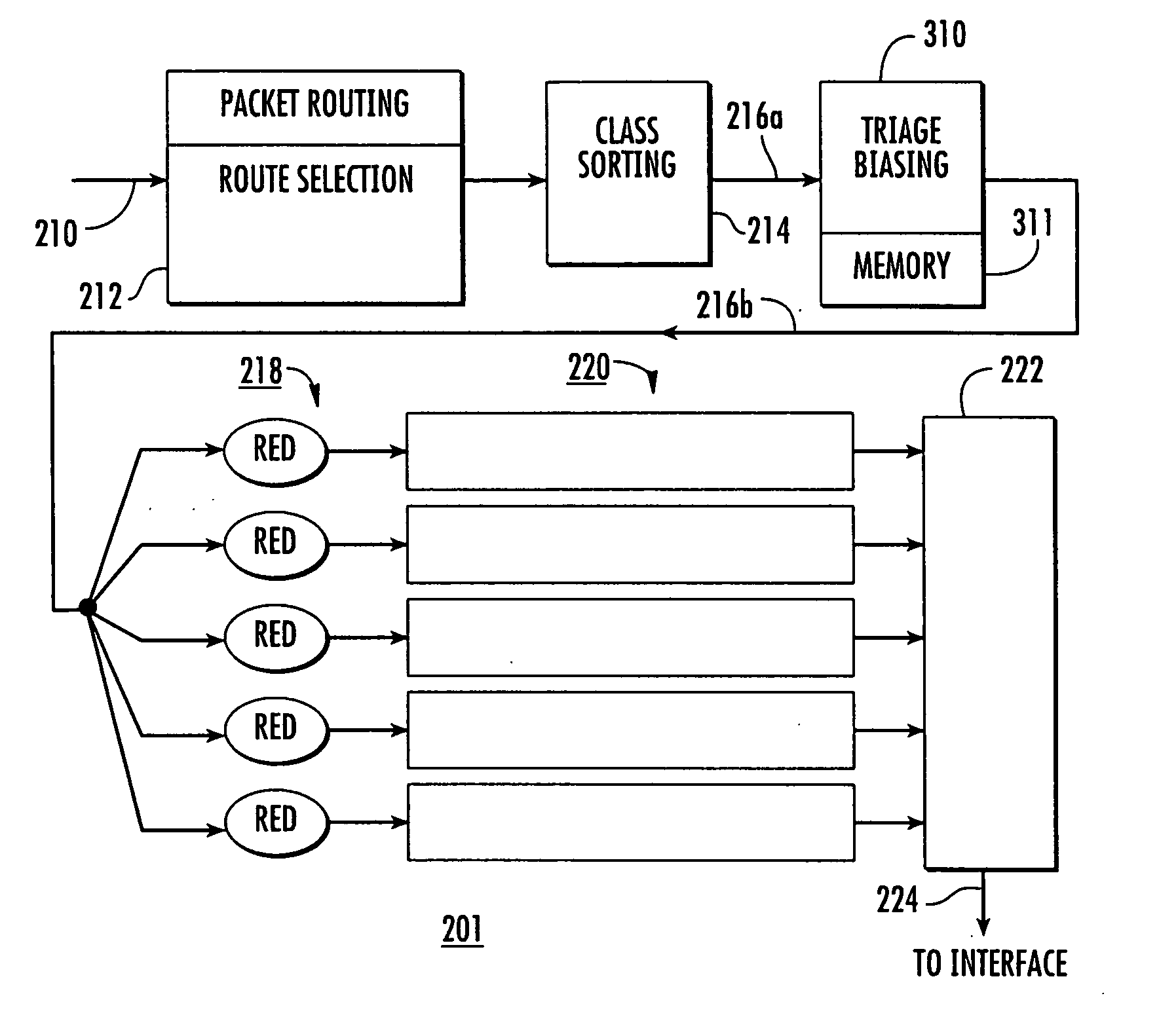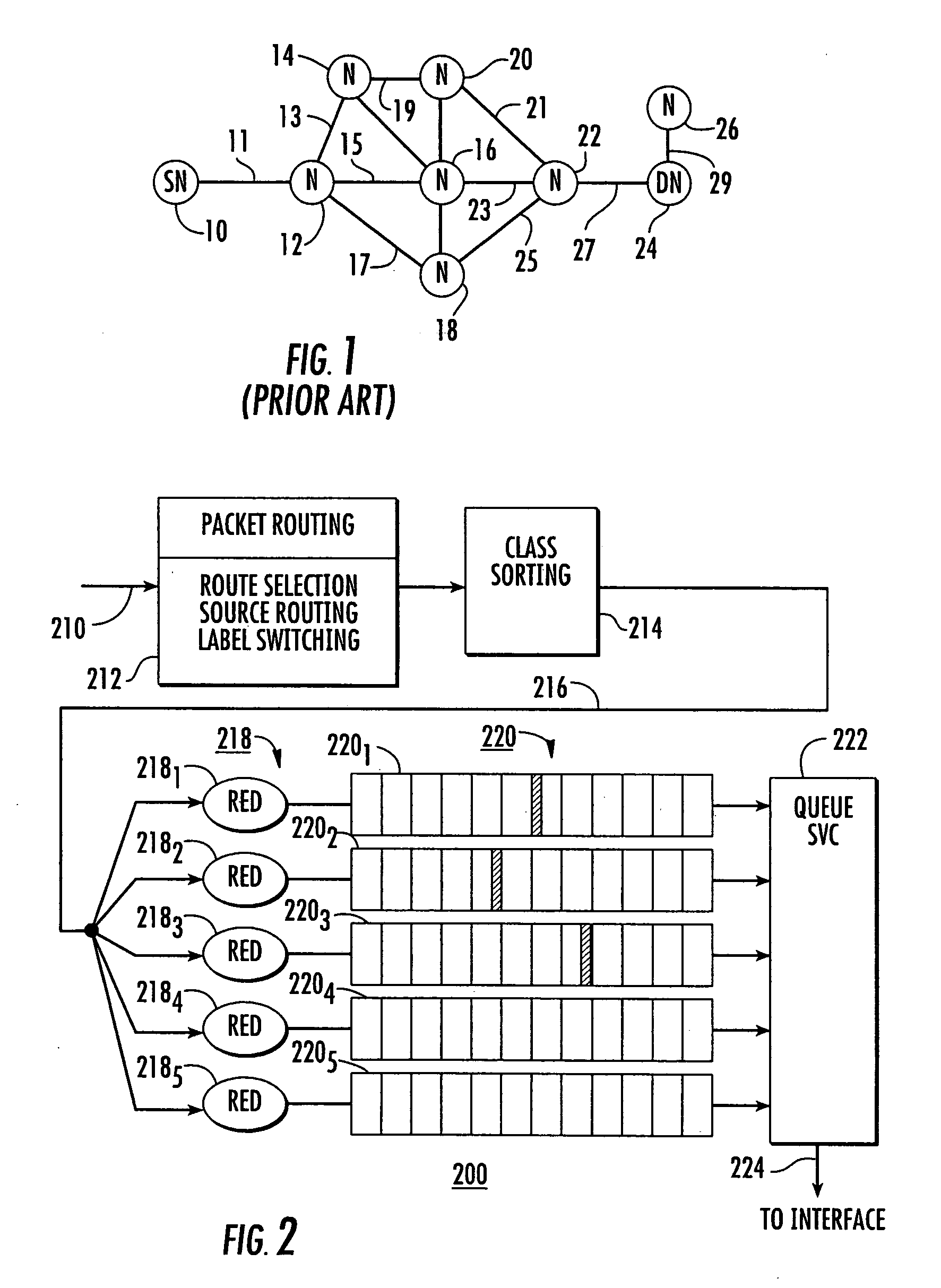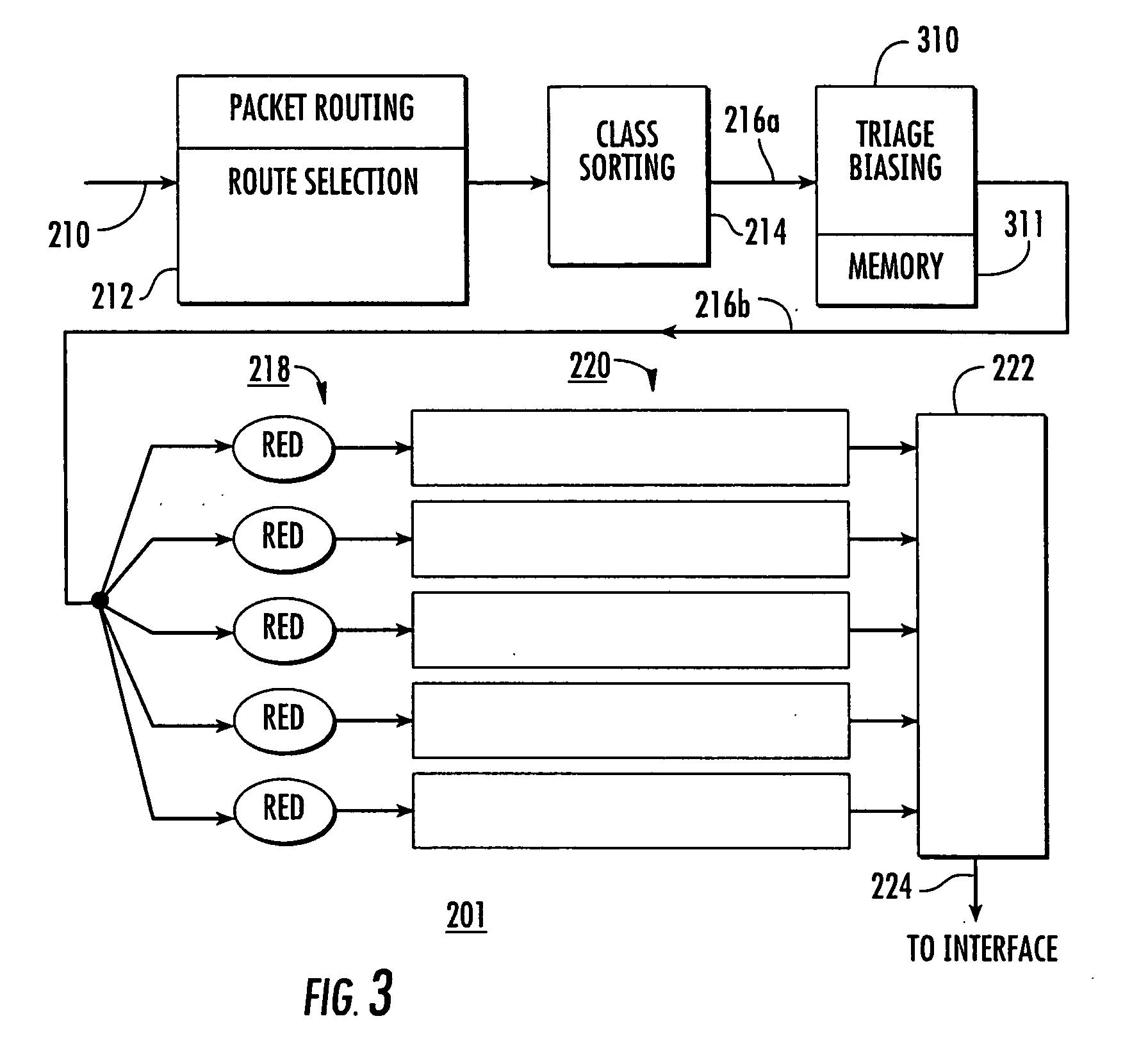Biasing of network node prioritization to improve per-hop behavior based on performance necessary for a packet to meet end-to-end QoS goals
a network node and priority technology, applied in the field of priority or scheduling of packet forwarding, can solve the problems of waste of resources, adverse effects of excessive delay, and adverse effects of voice over ip (voip), and achieve the effect of monitoring the loading of the network and reducing the cost of travel
- Summary
- Abstract
- Description
- Claims
- Application Information
AI Technical Summary
Benefits of technology
Problems solved by technology
Method used
Image
Examples
Embodiment Construction
[0023] The invention relates to Adaptive Quality of Service (QoS) for communications networks and attempts to achieve end-to-end QoS using triage-based per-hop behaviors. In this context, the term “triage” refers to evaluation of the packets to determine which ones are beyond saving (as by being so late as to no longer be useful), which require immediate attention (are late, but still useful), or are in good condition or at least relatively good condition (not late or even early). The approach is different from “Best Effort” per-hop behaviors that maximize network throughput but that do not differentiate QoS among classes of traffic, and is also different from Proportional Differentiated Services that provide rigorous preferential treatment for prioritized classes of traffic. The approach of the invention seeks to provide “Enough Effort” at each hop in a prioritized way or scheduled manner that maximizes end-to-end (E2E) success of flows in the network. While applicable to all IP ba...
PUM
 Login to View More
Login to View More Abstract
Description
Claims
Application Information
 Login to View More
Login to View More - R&D
- Intellectual Property
- Life Sciences
- Materials
- Tech Scout
- Unparalleled Data Quality
- Higher Quality Content
- 60% Fewer Hallucinations
Browse by: Latest US Patents, China's latest patents, Technical Efficacy Thesaurus, Application Domain, Technology Topic, Popular Technical Reports.
© 2025 PatSnap. All rights reserved.Legal|Privacy policy|Modern Slavery Act Transparency Statement|Sitemap|About US| Contact US: help@patsnap.com



